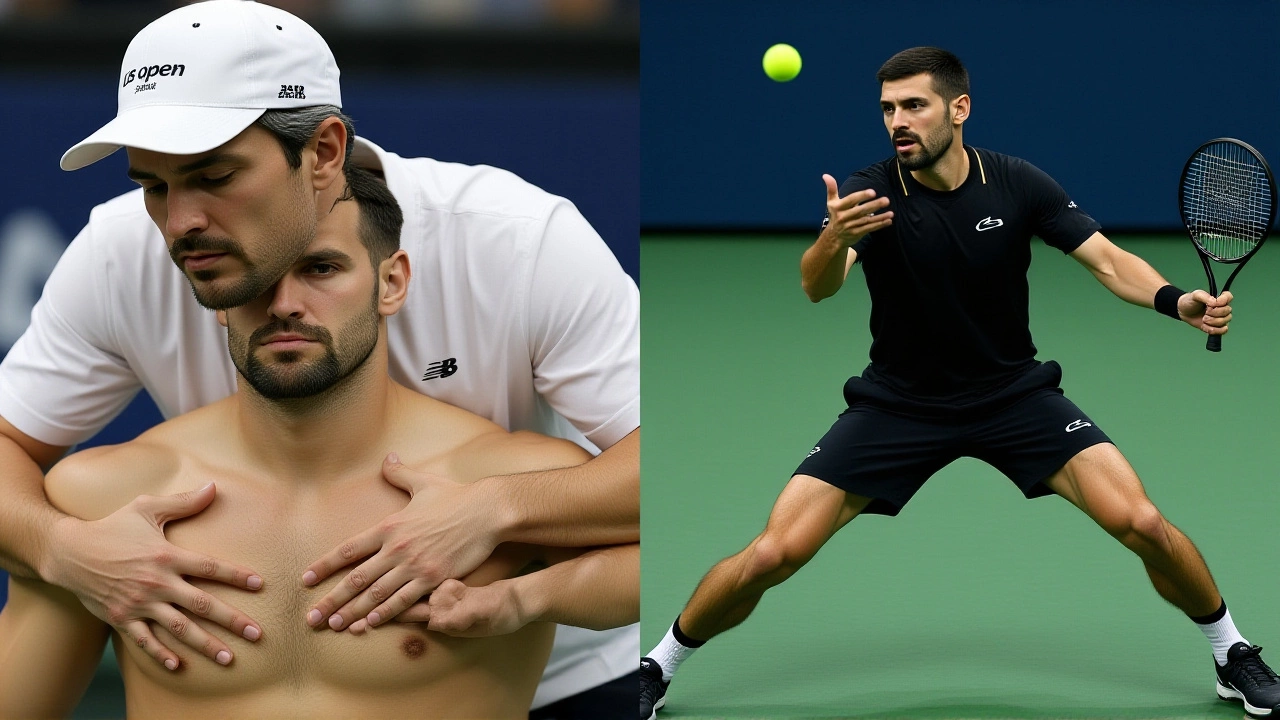Jan-Lennard Struff: A Deep Dive into the German Tennis Pro
When talking about Jan-Lennard Struff, a German professional tennis player known for his big serve and relentless baseline game. Also called the "German powerhouse," he has become a regular face on the world stage, especially in the ATP Tour, the men’s elite circuit that runs the global tennis calendar. Below we’ll unpack why his name matters, how he fits into the sport’s ecosystem, and what fans can expect from his next matches.
How Struff Fits into the Bigger Tennis World
The sport of tennis, a racket‑based competition played on various surfaces revolves around a few core structures: the ATP Tour, Grand Slam events, and national team competitions like the Davis Cup. Jan-Lennard Struff competes primarily on the ATP Tour, which organizes the weekly tournaments that award ranking points. Those points then determine entry into the four Grand Slam, the most prestigious tournaments in the sport—Australian Open, French Open, Wimbledon, and US Open. Because the ATP Tour feeds Grand Slam qualification, a solid performance on the tour directly increases a player’s chance to appear on the biggest stages.
Struff’s ranking history shows that consistent results at ATP 250 and 500 events often translate into deeper runs at Grand Slams. For example, a semifinal appearance at an ATP 250 earned him enough points to crack the top 50, giving him direct entry into Wimbledon’s main draw without qualifying. This chain—tour performance → ranking boost → Grand Slam access—highlights why his progress matters to any tennis follower.
German tennis has a proud lineage, from Boris Becker to Alexander Zverev. In that context, Struff adds a distinct flavor: a powerful left‑handed serve, a gritty baseline endurance, and a willingness to battle through five‑set matches. He often teams up with fellow German players in Davis Cup ties, where national pride fuels extra motivation. The German federation values players like Struff who bring experience and a hard‑working attitude to the team environment.
Beyond the court, Struff engages fans through social media, sharing behind‑the‑scenes glimpses of his training routine, travel life, and recovery methods. He’s known for posting workout snippets that emphasize core strength—key for generating his signature serve speed of over 120 mph. This openness helps aspiring players see the practical side of elite preparation, making his journey relatable rather than purely mythic.
When it comes to playing style, Struff leans on a heavy serve, aggressive forehand, and solid backhand down‑the‑line. On faster surfaces like indoor hard courts, his serve becomes a weapon that often wins free points, while on slower clay he relies more on consistency and constructing points patiently. This adaptability is why he’s been able to collect wins across all three major surfaces, a trait not all specialists share.
Recent weeks have seen him battle through the European swing, picking up a quarter‑final at the Barcelona Open and a tight loss in the second round of the French Open. Those matches revealed both his strengths—big serve, mental toughness—and areas to tighten up, like return consistency against top‑10 opponents. Injuries have been minimal, thanks to a disciplined physiotherapy regimen that includes weekly ice baths and mobility drills.
All this context sets the stage for the collection of articles below. Whether you’re curious about Struff’s ranking trajectory, his performance in specific tournaments, or the broader impact of German players on the ATP Tour, the posts ahead cover a wide range of angles. Dive in to get the latest stats, expert analysis, and fan perspectives that round out the picture of Jan‑Lennard Struff’s ongoing tennis story.

Djokovic Defeats Struff, Becomes Oldest US Open Quarter‑finalist Since Connors
Djokovic beats Struff 6‑3, 6‑3, 6‑2 at the 2025 US Open, becoming the oldest quarter‑finalist since Connors and tying a record for annual Grand Slam quarter‑finals.
Continue Reading